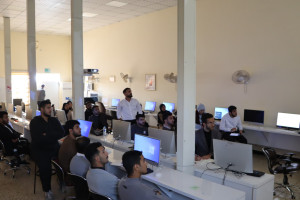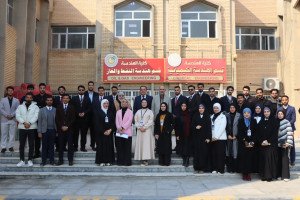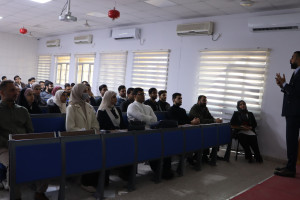The doctoral thesis of the student Tariq Imad Ibrahim was discussed in the College of Engineering, University of Basra, Department of Civil Engineering, entitled Study of the relationship between old and new concrete in structures loaded with static and repetitive loads.
The thesis includes Multiple experiments are performed to observe the disparities in the behaviour of various kinds of concrete in both its fresh and hardened phases, as well as its structural behaviour. Tests such as V-funnel, slump flow and L-box, are done on concrete mixtures in their fresh condition. The concrete tests conducted are for bond strength, static modulus of elasticity, and compressive strength. The investigation related to structural behaviour consisted of studying the effect of many variables such as surface preparation, type of bonding agent, compressive strength of the new concrete, amount of steel reinforcement crossing the interface, age difference, and concrete type of new concrete.
The first part of the experimental program consists of casting and testing 42 shear slant specimens, with three similar specimens for each group. The dimensions of the specimen are (75*150mm). The specimens were divided into many groups according to surface preparation, bonding agent, strength of the new concrete, age of the old concrete, and type of new concrete, under the effect of static loads only.
The second part of the experimental program consists of casting and testing 20 composite beams under static and repeated loads. The 20 beams were divided into many groups according to the type and strength of the new concrete, surface condition, type of bonding agent between the layers, existing steel stirrups crossing the interface, and age of the old concrete.
The results of experimental work showed that increasing the age of old concrete results in a corresponding decrease in the bonding strength and normal compression stress of the samples. The bonding strength decreases by 16.6, 25.4, and 28% for samples with old concrete age of 7 days, 28 days, and one year, respectively, with respect to the sample with old concrete age of 3 days. The failure mode of the samples of new concrete of SCC and steel fibers was the same, which is a bond failure, but the sample of new concrete of SIKA and HSC failed with compression failure. All tested beams failed by shear with diagonal tensile fracture for repeated load. The shear failure modes identified in specimens exposed to repeated loading are similar to those reported in identical specimens subjected to monotonic loading. The repeated application of loads leads to failure at the top fiber of the beam. This is caused by the deterioration of concrete stiffness and increased failure due to repetitive loading.
Furthermore, the flexural response of composite beams was analysed using the ABAQUS software using the finite element analysis method. A significant correlation was found between numerical models' ultimate loads and deflection and their experimental counterparts, whether subjected to static or repetitive loads. Finally, for the case of repeated load, all tested beams failed by shear with diagonal tensile fracture experimentally and numerically.









